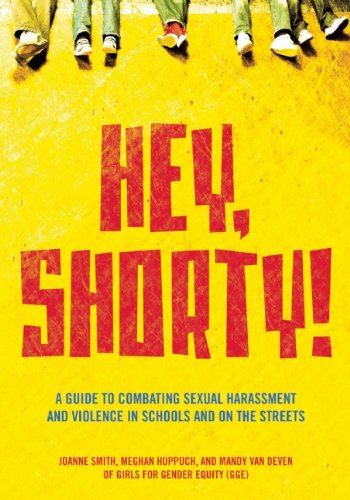“She deserved it.” “She was fast.” “She shouldn’t have been alone.” In 2001, Joanne N. Smith listened as young female students regurgitated the opinions of their parents, teachers, and peers, blaming an eight-year-old victim who had recently been followed, dragged, raped and left bloodied on her way to school.
Smith, the founder and executive director of Girls for Gender Equity (GGE), was shocked. At the time, the Brooklyn-based grassroots organization had just begun, aiming to “improve gender and race relations and socio-economic conditions for our most vulnerable youth and communities of colour.” She knew that GGE faced, among many other things, the daunting task of teaching girls to deconstruct stereotypes and systems of belief after they had already been trained by society to internalize misogyny.
“Blaming the victim by identifying with the aggressor allowed the girls to distance themselves from her, thereby gaining a false sense of security,” writes Smith of this experience in the introduction of Hey, Shorty! A Guide to Combating Sexual Harassment and Violence in Schools and on the Streets, a new book co-written by Smith, Mandy Van Deven and Meghan Huppuch.
Hey, Shorty! is arguably less a how-to guide about combating sexual harassment and violence and more a case study of the “incremental, slow-moving, and sometimes difficult to see” success of GGE, which, like most organizations of its kind, has faced systematic barriers and resistance since it began on Sept. 11, 2001.
Since its inception, GGE has operated on the belief that public schools should be safe for all children and that parents should feel good about sending their kids to school each day. Unfortunately, their research, much of which is presented in Hey, Shorty!, shows that this isn’t the case.
A 2007-2008 study conducted by young GGE researchers presented three major findings, each exposing truths about the sexist, racist and homophobic violence embedded in school culture.
The study concluded that:
1. In-school harassment happens in many ways, to many people, and in many locations.
2. Sexual harassment is a “normal” part of young people’s school experience
3. Youth want and need more education about sexual harassment.
” … the girls shared their own stories of being propositioned in the hallways and in classrooms, having other students touch their bodies without permission, and people spreading rumours about their sexuality or sexual experiences,” write Smith and Van Deven, recalling their many conversations with young girls about sexual harassment.
“By sharing their own personal stories, the personal became political,” they write of students who began to see themselves as agents of social change even when the education system failed to protect them from gender-based discrimination and violence.
“It is painfully clear that schools are failing to ensure students’ safety when they are ‘groped daily’ or when their classmates declare it ‘grab-anything-you-want day,’ implying that they have a right to grab another person’s body,” write Smith and Van Deven.
Teachers and administrators often adopt a “boys will be boys” attitude when dealing with instances of ogling, touching and sexual teasing. Even students who are courageous enough to speak up to authorities aren’t taken seriously leaving boys and girls who are sexually harassed with feelings of anger, powerlessness, and shame.
What I wanted most from this book was more. I wanted to know about the activist fatigue likely experienced by GGE organizers. I wanted to hear from students themselves, parents, and teachers. I wanted to know more about the roles privilege, race, and sexuality play in hostile school culture, and I wanted to know more about the repercussions of ugly words like “faggot” and “slut” echoing in the hallways of schools. However, I know firsthand how costly a book like this can be to a grassroots organization, and there simply wasn’t enough room to provide readers with GGE’s complete wealth of research and knowledge.
Hey, Shorty! is an especially important read for community organizers and activists attempting to give voice to vulnerable and underserved communities, but it should also be read by parents, educators and young boys and girls who live the reality of an often unsafe and oppressive public school culture.
The book’s Appendix brims with crucial information about how to stop and respond to sexual harassment; strategies for prevention for students, parents and school staff; how to take advantage of teachable moments at home and in the classroom; and how we all can help to dispel myths about sexual harassment.—Jessica Rose
This review first appeared on Jessica Rose’s blog Not My Typewriter. Not My Typewriter is part of the Hey, Shorty! Virtual Book Tour.



